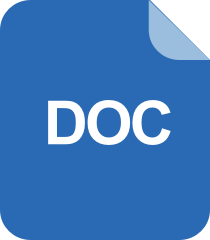This is Python version 2.7.2
============================
Copyright (c) 2001, 2002, 2003, 2004, 2005, 2006, 2007, 2008, 2009, 2010, 2011
Python Software Foundation. All rights reserved.
Copyright (c) 2000 BeOpen.com.
All rights reserved.
Copyright (c) 1995-2001 Corporation for National Research Initiatives.
All rights reserved.
Copyright (c) 1991-1995 Stichting Mathematisch Centrum.
All rights reserved.
License information
-------------------
See the file "LICENSE" for information on the history of this
software, terms & conditions for usage, and a DISCLAIMER OF ALL
WARRANTIES.
This Python distribution contains no GNU General Public Licensed
(GPLed) code so it may be used in proprietary projects just like prior
Python distributions. There are interfaces to some GNU code but these
are entirely optional.
All trademarks referenced herein are property of their respective
holders.
What's new in this release?
---------------------------
See the file "Misc/NEWS".
If you don't read instructions
------------------------------
Congratulations on getting this far. :-)
To start building right away (on UNIX): type "./configure" in the
current directory and when it finishes, type "make". This creates an
executable "./python"; to install in /usr/local, first do "su root"
and then "make install".
The section `Build instructions' below is still recommended reading.
What is Python anyway?
----------------------
Python is an interpreted, interactive object-oriented programming
language suitable (amongst other uses) for distributed application
development, scripting, numeric computing and system testing. Python
is often compared to Tcl, Perl, Java, JavaScript, Visual Basic or
Scheme. To find out more about what Python can do for you, point your
browser to http://www.python.org/.
How do I learn Python?
----------------------
The official tutorial is still a good place to start; see
http://docs.python.org/ for online and downloadable versions, as well
as a list of other introductions, and reference documentation.
There's a quickly growing set of books on Python. See
http://wiki.python.org/moin/PythonBooks for a list.
Documentation
-------------
All documentation is provided online in a variety of formats. In
order of importance for new users: Tutorial, Library Reference,
Language Reference, Extending & Embedding, and the Python/C API. The
Library Reference is especially of immense value since much of
Python's power is described there, including the built-in data types
and functions!
All documentation is also available online at the Python web site
(http://docs.python.org/, see below). It is available online for occasional
reference, or can be downloaded in many formats for faster access. The
documentation is downloadable in HTML, PostScript, PDF, LaTeX, and
reStructuredText (2.6+) formats; the LaTeX and reStructuredText versions are
primarily for documentation authors, translators, and people with special
formatting requirements.
Web sites
---------
New Python releases and related technologies are published at
http://www.python.org/. Come visit us!
Newsgroups and Mailing Lists
----------------------------
Read comp.lang.python, a high-volume discussion newsgroup about
Python, or comp.lang.python.announce, a low-volume moderated newsgroup
for Python-related announcements. These are also accessible as
mailing lists: see http://www.python.org/community/lists/ for an
overview of these and many other Python-related mailing lists.
Archives are accessible via the Google Groups Usenet archive; see
http://groups.google.com/. The mailing lists are also archived, see
http://www.python.org/community/lists/ for details.
Bug reports
-----------
To report or search for bugs, please use the Python Bug
Tracker at http://bugs.python.org/.
Patches and contributions
-------------------------
To submit a patch or other contribution, please use the Python Patch
Manager at http://bugs.python.org/. Guidelines
for patch submission may be found at http://www.python.org/dev/patches/.
If you have a proposal to change Python, you may want to send an email to the
comp.lang.python or python-ideas mailing lists for inital feedback. A Python
Enhancement Proposal (PEP) may be submitted if your idea gains ground. All
current PEPs, as well as guidelines for submitting a new PEP, are listed at
http://www.python.org/dev/peps/.
Questions
---------
For help, if you can't find it in the manuals or on the web site, it's
best to post to the comp.lang.python or the Python mailing list (see
above). If you specifically don't want to involve the newsgroup or
mailing list, send questions to help@python.org (a group of volunteers
who answer questions as they can). The newsgroup is the most
efficient way to ask public questions.
Build instructions
==================
Before you can build Python, you must first configure it.
Fortunately, the configuration and build process has been automated
for Unix and Linux installations, so all you usually have to do is
type a few commands and sit back. There are some platforms where
things are not quite as smooth; see the platform specific notes below.
If you want to build for multiple platforms sharing the same source
tree, see the section on VPATH below.
Start by running the script "./configure", which determines your
system configuration and creates the Makefile. (It takes a minute or
two -- please be patient!) You may want to pass options to the
configure script -- see the section below on configuration options and
variables. When it's done, you are ready to run make.
To build Python, you normally type "make" in the toplevel directory.
If you have changed the configuration, the Makefile may have to be
rebuilt. In this case, you may have to run make again to correctly
build your desired target. The interpreter executable is built in the
top level directory.
Once you have built a Python interpreter, see the subsections below on
testing and installation. If you run into trouble, see the next
section.
Previous versions of Python used a manual configuration process that
involved editing the file Modules/Setup. While this file still exists
and manual configuration is still supported, it is rarely needed any
more: almost all modules are automatically built as appropriate under
guidance of the setup.py script, which is run by Make after the
interpreter has been built.
Troubleshooting
---------------
See also the platform specific notes in the next section.
If you run into other trouble, see the FAQ
(http://www.python.org/doc/faq/) for hints on what can go wrong, and
how to fix it.
If you rerun the configure script with different options, remove all
object files by running "make clean" before rebuilding. Believe it or
not, "make clean" sometimes helps to clean up other inexplicable
problems as well. Try it before sending in a bug report!
If the configure script fails or doesn't seem to find things that
should be there, inspect the config.log file.
If you get a warning for every file about the -Olimit option being no
longer supported, you can ignore it. There's no foolproof way to know
whether this option is needed; all we can do is test whether it is
accepted without error. On some systems, e.g. older SGI compilers, it
is essential for performance (specifically when compiling ceval.c,
which has more basic blocks than the default limit of 1000). If the
warning bothers you, edit the Makefile to remove "-Olimit 1500" from
the OPT variable.
If you get failures in test_long, or sys.maxint gets set to -1, you
are probably experiencing compiler bugs, usually related to
optimization. This is a common problem with some versions of gcc, and
some vendor-supplied compilers, which can sometimes be worked aro
小乖写代码
- 粉丝: 1088
- 资源: 46
最新资源
- Fluent激光焊接模拟技术:基于椎体热源模型与双椭球热源模型的小孔动态行为研究,考虑反冲压力、表面张力、热浮力及热损失因素,利用CSF公式平滑处理反冲压力,灵活调整材料参数的数值模拟方法,涵盖参考文
- read-camera.py 这段 Python 代码的主要功能是同时从多个摄像头读取视频帧,将每个摄像头读取的帧存储在队列中,并按照一定的时间间隔将这些帧保存为 BMP 图像文件
- 光端机带485回传原理图
- VSG预同步控制与电流双环控制的Matlab仿真模型研究及电力电子入门指南,基于Matlab的VSG预同步控制仿真模型:涵盖并网逆变器、VSG控制及电流双环管理等多模块研究参考文献详实电力电子仿真入门
- 远程监控直流电源(普源DP932U)
- 远程监控直流电源(普源DP932U)
- JAVA30道面试题.zip
- 基于Matlab Simulink仿真的电气工程自动化:直驱永磁同步电机与风力机最大功率跟踪技术结合制氢的孤岛pwm调制技术探索,基于Matlab Simulink仿真的电气工程自动化:直驱永磁同步电
- 酒店管理系统设计与实现
- 720p模拟光端机接收原理图CPLD
- 16进制数据校验软件,方便计算16进制数组常用校验值
- 撒大大阿达阿达把v吃不吃VB
- 三菱PLC与组态王协同的自动蜂窝煤生产线控制系统设计:五传送带控制系统的策略与PLC程序设计,基于三菱PLC与组态王设计的自动蜂窝煤生产线五传送带控制系统优化与程序设计研究,三菱PLC和组态王自动蜂窝
- C语言常见数据类型总结
- 西门子Smart PLC四轴搬运取料机案例程序:从新手到项目的跃升之路,西门子Smart PLC四轴搬运取料机运动控制案例程序-PLC通信与伺服电机自动化控制解决方案,西门子200smart运动控制
- mysql面试题参考.zip
资源上传下载、课程学习等过程中有任何疑问或建议,欢迎提出宝贵意见哦~我们会及时处理!
点击此处反馈

















